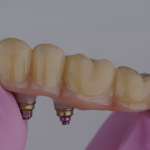The ice cream hits that back tooth and sends a lightning bolt of pain straight through your jaw. You wince, probe gently with your tongue, and discover what you’ve been dreading—a rough edge where smooth enamel once was. Now you’re facing the inevitable dental appointment, wondering if getting dental fillings will hurt more than the cavity that’s been bothering you for weeks.
Understanding Dental Fillings and Pain Levels
Modern dental filling procedures have evolved significantly from the anxiety-inducing experiences of decades past. Today’s dental professionals utilize advanced techniques, improved filling materials, and sophisticated pain management protocols to ensure patient comfort throughout the dental procedure.
The reality is that most dental filling procedures involve minimal discomfort when performed by experienced dental team members using proper local anesthesia. The majority of patients report that the anticipation of pain far exceeds the actual experience during the dental restoration process.
Factors Affecting Pain Perception
- Extent of tooth decay and cavity depth
- Location of the affected tooth in your mouth
- Individual pain tolerance and anxiety levels
- Quality of local anesthetic administration
- Experience and technique of your dentist
- Type of filling material being used
Types of Dental Fillings and Associated Discomfort
Different dental filling materials require varying dental procedures that can affect comfort levels during and after treatment. Understanding these options helps patients make informed decisions about their dental restoration needs.
Composite Fillings
Composite fillings made from tooth-coloured resins and composite resin materials offer excellent aesthetic results, particularly for front teeth. The dental filling procedure involves minimal tooth structure removal and utilizes a dental curing light to harden the composite material.
- Composite resin bonds directly to natural teeth
- Requires less drilling than traditional amalgam fillings
- White fillings blend seamlessly with existing tooth color
- Curing process with specialized light is painless
- May cause temporary tooth sensitivity to temperature changes
Amalgam Fillings
Silver amalgam fillings and dental amalgam restorations have served patients reliably for over 150 years. Despite concerns about mercury content, the Canadian Dental Association confirms their safety for most patients, though some individuals may experience allergic reactions.
- Silver fillings require more extensive tooth structure removal
- Durable metal fillings withstand significant chewing load
- Often used for posterior teeth due to strength
- May cause initial tooth sensitivity to temperature
- Generally covered by most dental insurance plans
Advanced Filling Materials
Modern dentistry offers sophisticated alternatives including porcelain fillings, ceramic fillings, gold fillings, and glass ionomer fillings. These premium dental materials often require specialized techniques but can provide superior longevity and comfort.
Premium Filling Options:
- Porcelain inlays / onlays crafted in specialized dental laboratory
- Ceramic inlays offering exceptional durability and aesthetics
- Gold alloy restorations for maximum longevity
- Glass ionomer materials that release protective fluoride
- Resin ionomers combining strength with tooth-like appearance
The Dental Filling Procedure: What to Expect
Understanding the step-by-step process of receiving a dental filling helps alleviate anxiety and sets realistic expectations for comfort levels throughout the dental procedure.
Step-by-Step Procedure:
- X-rays and radiological imaging to assess decay extent
- Local anesthesia administration to numb the treatment area
- Careful removal of tooth decay using precise dental instrument techniques
- Thorough cleaning and preparation of the cavity
- Placement of chosen filling material in layers if needed
- Shaping and polishing for optimal bite alignment
- Final bite check and adjustments as necessary
Pain Management During Treatment
Effective anesthesia ensures that patients experience no pain during the actual dental filling procedure. Modern local anesthetic techniques provide complete numbing while minimizing post-treatment discomfort.
- Topical anesthetic applied before injection for increased comfort
- Advanced injection techniques reduce needle discomfort
- Adequate time allowed for complete numbing before beginning
- Continuous monitoring of patient comfort throughout procedure
- Additional anesthesia available if needed during treatment
Modern Technology Reducing Filling Discomfort
Contemporary dental clinics employ cutting-edge technology that significantly reduces discomfort associated with dental procedures. These innovations make dental appointments more comfortable and efficient than ever before.
Advanced Diagnostic and Treatment Tools
- Digital X-rays providing instant, detailed imaging with reduced radiation
- Laser decay detection eliminating the need for exploratory drilling
- Air abrasion techniques reducing reliance on traditional drill methods
- CEREC technology enabling same-day ceramic restorations
- Intraoral cameras allowing precise visualization of treatment areas
Improved Materials and Techniques
Modern dental restoratives and filling materials offer enhanced biocompatibility and reduced post-treatment sensitivity. Advanced composite materials and dental ceramics provide superior results with minimal discomfort.
Technology Benefits: Advanced dental curing light systems and improved resin composite formulations allow for faster treatment times and reduced tooth sensitivity following procedures.
Factors That Influence Filling Pain
Several individual and procedural factors affect the comfort level experienced during and after dental filling placement. Understanding these variables helps patients and dental professionals optimize treatment approaches.
Individual Patient Factors
- Genetics influencing pain perception and healing responses
- Pre-existing tooth sensitivity to temperature or pressure
- Overall oral health and dental hygiene status
- Anxiety levels and previous dental experiences
- Presence of bruxism or teeth grinding habits
- Saliva production affecting healing and comfort
Procedural Considerations
- Size and location of the cavity being treated
- Proximity to tooth pulp and nerve structures
- Need for temporary fillings during multi-visit treatments
- Complexity requiring indirect fillings or dental impressions
- Integration with other treatments like crowns or root canal therapy
Post-Filling Recovery and Aftercare
Proper post-treatment care significantly impacts comfort levels and ensures optimal healing of restored teeth. Most patients experience minimal discomfort following dental filling procedures when appropriate aftercare guidelines are followed.
Immediate Post-Treatment Care
- Avoid eating until anesthesia completely wears off
- Be cautious with hot or cold foods and beverages initially
- Resume normal brushing and flossing routines gently
- Use over-the-counter pain relievers if mild discomfort occurs
- Contact your dentist if severe pain or sensitivity persists
Long-Term Care for Filled Teeth
Maintaining excellent oral hygiene and attending regular checkups ensures the longevity of your dental restoration and prevents future tooth decay.
- Continue thorough daily oral care routines
- Use fluoride toothpaste to strengthen surrounding enamel
- Avoid excessive force when chewing hard foods
- Schedule regular dental appointments for monitoring
- Address any cracks or fractures promptly
When Additional Treatment May Be Needed
While most dental fillings provide straightforward solutions, some situations may require additional dental procedures depending on the extent of decay or structural damage to the tooth.
Complex Cases Requiring Extended Treatment
- Root canal treatment when decay reaches the tooth pulp
- Dental crown placement for extensively damaged teeth
- Onlays or inlays for large cavities requiring structured support
- Bridges or dental implant crowns for severely compromised teeth
- Partial dentures considerations for multiple affected teeth
Why Choose Delta Park Dental?
Delta Park Dental combines advanced technology with compassionate care to ensure the most comfortable dental filling experience possible. Our experienced dental team utilizes state-of-the-art equipment including digital X-rays, laser diagnostics, and the latest in composite resin materials to provide superior dental restorations.
We understand that dental anxiety is real, which is why our dental professionals take extra time to explain each step of your dental procedure and ensure your complete comfort throughout treatment. Our modern facility features advanced anesthesia techniques and pain management protocols that make dental appointments as comfortable as possible.
Our comprehensive approach to oral health goes beyond individual dental fillings. We work with patients to develop personalized oral care plans that prevent future tooth decay and maintain optimal dental health. From routine checkups to complex dental procedures, our team provides continuity of care that builds lasting relationships.
We offer a full range of filling materials including tooth-coloured resins, porcelain options, and traditional amalgam fillings to meet every patient‘s needs and budget. Our partnerships with leading dental laboratory facilities ensure access to the highest quality indirect fillings and custom restorations when needed.
Located conveniently for patients throughout the region, Delta Park Dental accepts most dental insurance plans and offers flexible payment options to make quality dental care accessible to everyone. Choose us for your dental filling needs and experience the difference that modern technology, expert care, and genuine compassion make in your dental journey.
Conclusion
Modern dental filling procedures involve minimal discomfort when performed by skilled dental professionals using advanced anesthesia techniques and quality filling materials. While some temporary tooth sensitivity may occur, the vast majority of patients find the experience far more comfortable than anticipated. Proper aftercare and regular dental appointments ensure optimal healing and long-lasting results for your dental restoration.
Tags
- Dental Bridge Brampton
- Dental Bonding Near me
- Dental Bonding In Brampton
- Dental Filling
- Dental Fillings
- Dental Bonding
- Dental Bonding Brampton
- Dental Filling Brampton
- Bridge Dental Brampton
- Dental Bridges
- Emergency Dental Brampton
- Dental Emergency Near Me
- Emergency Dentistry
- Wisdom Teeth Extraction
- Veneers Dental
- Dental Veneers Near Me
- Dental Bridges Near Me
- Dental Bridges Brampton
- Dental Implant Brampton
- Dental Crown Near Me
- Dental Crown
- Dental Crown Brampton
- Dental Crown in Brampton
- Dental Veneers
- Dental Cleaning
- Dental Cleaning in Brampton
- Dental Cleaning Brampton
- Brampton Dental Cleaning
- Dental Implant in Brampton
- Dental Implant
- Veeners Dental Near Me
- Brampton Dental Implant
- Teeth Whitening Near Me
- Whiten Teeth
- Teeth Whitening Dentist
- Dental Teeth Whitening
- Whitening Teeth
- Wisdom Teeth Removal
- Dental Veneer
- Tooth Extraction
- Teeth Extraction
- Dental Filling Near me
- Dental Filling Before and After
- Dental Emergency Brampton
- Emergency Dentistry Services




